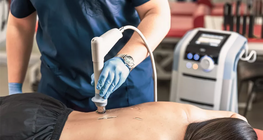Overview of low and medium frequency currents in physiotherapy treatment methods.
Anatomy of the shoulder and upper extremity.
Humans are homeotherms, meaning they regulate body temperature within a narrow range.
Assessing respiration and oxygenation in critically ill patients.
Anatomy of the upper extremities
There are invasive, minimally invasive, and non-invasive methods of hemodynamic monitoring; all of them assess physiological processes to provide valuable diagnostic and therapeutic information.
Anatomy of the trunk and neck muscles.
The patient's general condition and level of consciousness are key factors.
Periodic vital sign measurement and monitoring are essential in the care and treatment of critically ill patients.
Gynaecological surgery can be divided into two categories: vaginal surgery and abdominal surgery.
Breast cancer is the most frequently diagnosed cancer in women globally.
In artificial nutrition, specialized nutritional formulas are administered enterally in a patient who cannot feed on their own.
Monitoring with the elimination of stool and urine is a crucial aspect of nursing care for patients in critical condition.
Walking aids are used when one cannot carry bodyweight on at least one lower extremity.
Osteoporosis is a disease of progressive bone loss, it is called a “silent" disease because there are typically no symptoms until a bone is broken.
Patient positioning to maintain the patient in a neutral body position.
Spine curvature disorders are characterized by abnormal curvatures of the spine that deviate from its normal alignment
Maintaining proper hygiene is a fundamental human need that contributes to overall well-being.
Degenerative changes in the spine can also be caused by ageing or overuse.
Patient safety in critical care nursing





















